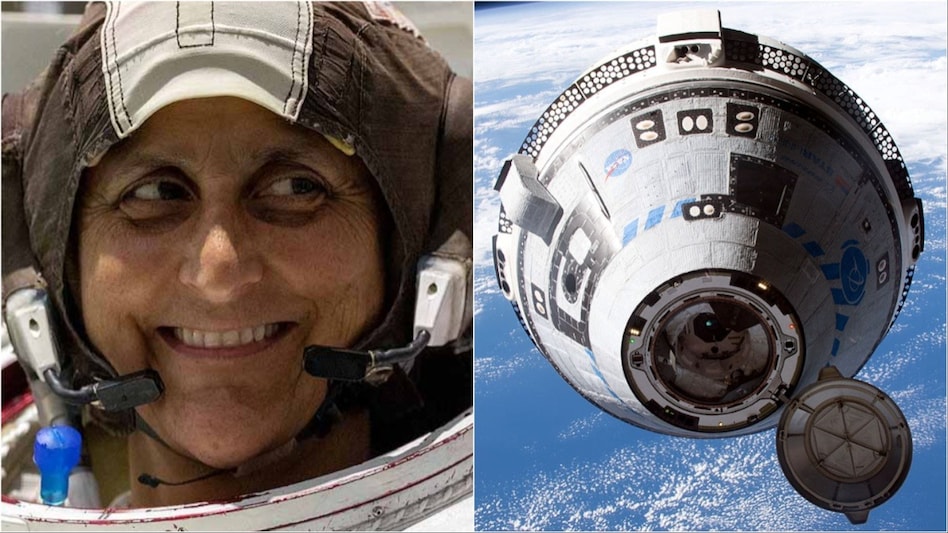 Sunita Williams, NASA, Boeing, Starliner, Space Station
Sunita Williams, NASA, Boeing, Starliner, Space Station Sunita Williams, NASA, Boeing, Starliner, Space Station
Sunita Williams, NASA, Boeing, Starliner, Space StationDuring a teleconference with media on Wednesday, NASA revealed that it is still uncertain about the fate of astronauts Sunita Williams and Butch Wilmore. The agency claimed they are weighing the option of keeping astronauts Sunita Williams and Butch Wilmore aboard the International Space Station (ISS) until early 2025, following ongoing issues with Boeing’s Starliner capsule. Originally planned as a short test mission, the astronauts might now return to Earth on a SpaceX flight, leaving the Starliner to come back unmanned.
NASA is currently reviewing more data on the Starliner's performance and plans to make a final decision by the end of next week or early the following week. The critical thrusters that have malfunctioned are essential for maintaining the capsule's orientation during re-entry into Earth's atmosphere.
The mission, which launched with much anticipation, has been plagued by technical problems since its arrival at the ISS. Thruster failures and helium leaks have raised serious concerns about the Starliner’s ability to safely return to Earth. These issues have left Williams and Wilmore in an uncertain situation far beyond their expected one-week mission.
Ken Bowersox, NASA’s space operations mission chief said, “We’ve got time available before we bring Starliner home and we want to use that time wisely."
One of the leading alternatives being considered is to have the astronauts return on SpaceX’s next scheduled mission, currently targeted for late September. If this plan is adopted, Williams and Wilmore would remain on the ISS until February 2025, returning to Earth aboard SpaceX’s Dragon capsule at the end of that mission. This change would require adjusting the crew assignments for the upcoming SpaceX flight, with two of the four originally planned astronauts being bumped to accommodate Wilmore and Williams.
Another challenge involves the limited docking ports available for U.S. spacecraft at the ISS. For the SpaceX Dragon capsule to dock, Boeing’s Starliner would need to leave first, creating a logistical puzzle for NASA.
NASA intends to keep them in space until their replacements arrive, provided no emergencies arise. Typically, ISS missions last about six months, although some have extended to a full year.
NASA’s partnership with Boeing and SpaceX is part of its strategy to ensure multiple transportation options for its astronauts following the retirement of the Space Shuttle in 2011. While SpaceX successfully launched its first crewed mission in 2020, Boeing has faced numerous setbacks. After a problematic uncrewed test flight in 2019, Boeing was forced to make costly repairs and adjustments, delaying the Starliner’s first crewed mission until this year.
NASA remains committed to having both companies provide reliable access to the ISS, but the ongoing issues with the Starliner are a significant hurdle in achieving that goal. As NASA continues to assess the situation, the fate of the mission and the astronauts hangs in the balance.
For Unparalleled coverage of India's Businesses and Economy – Subscribe to Business Today Magazine